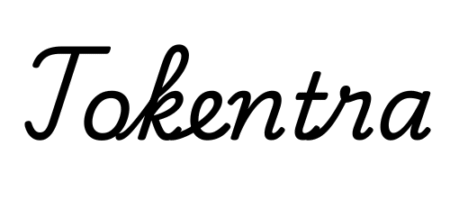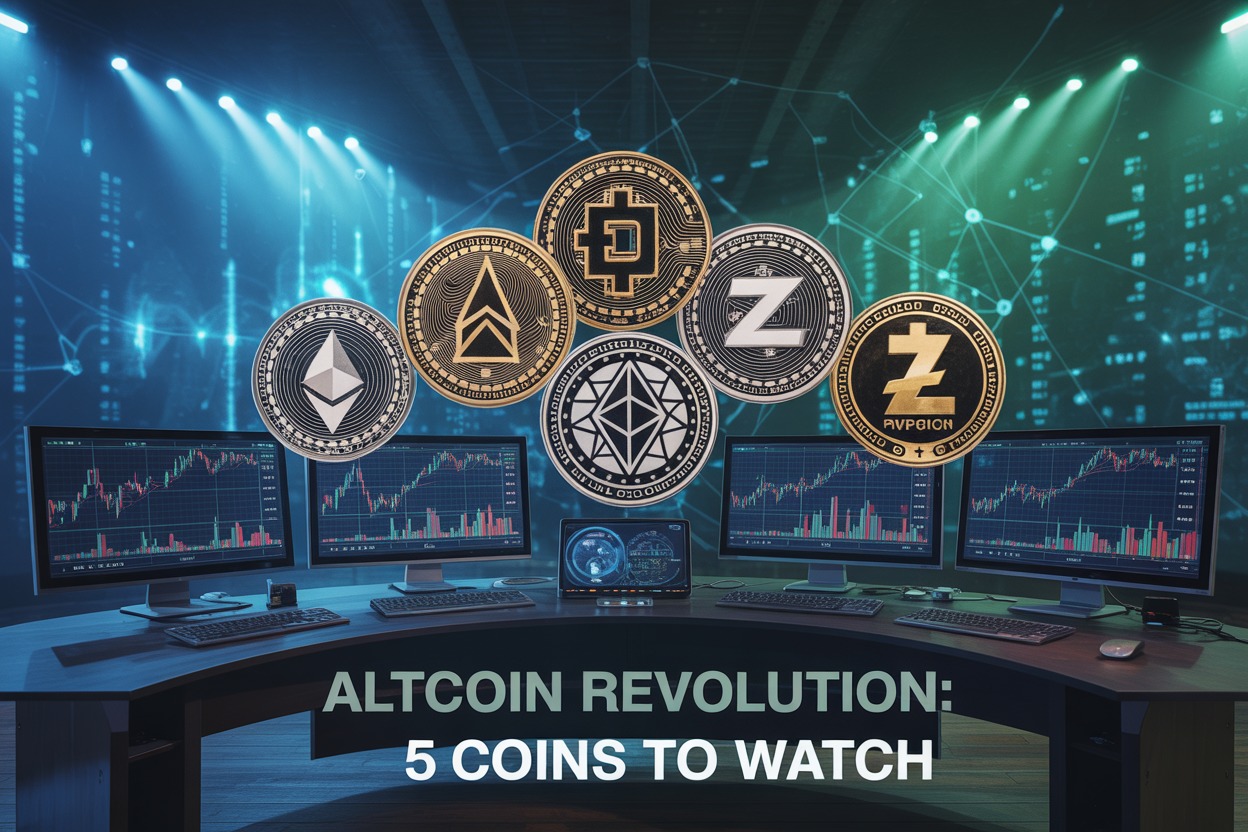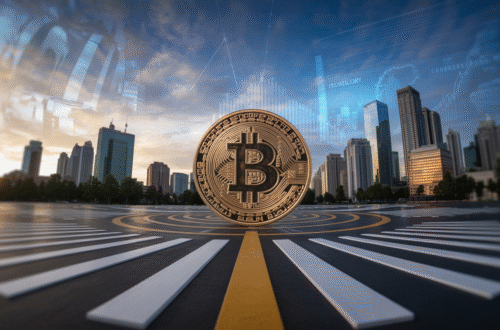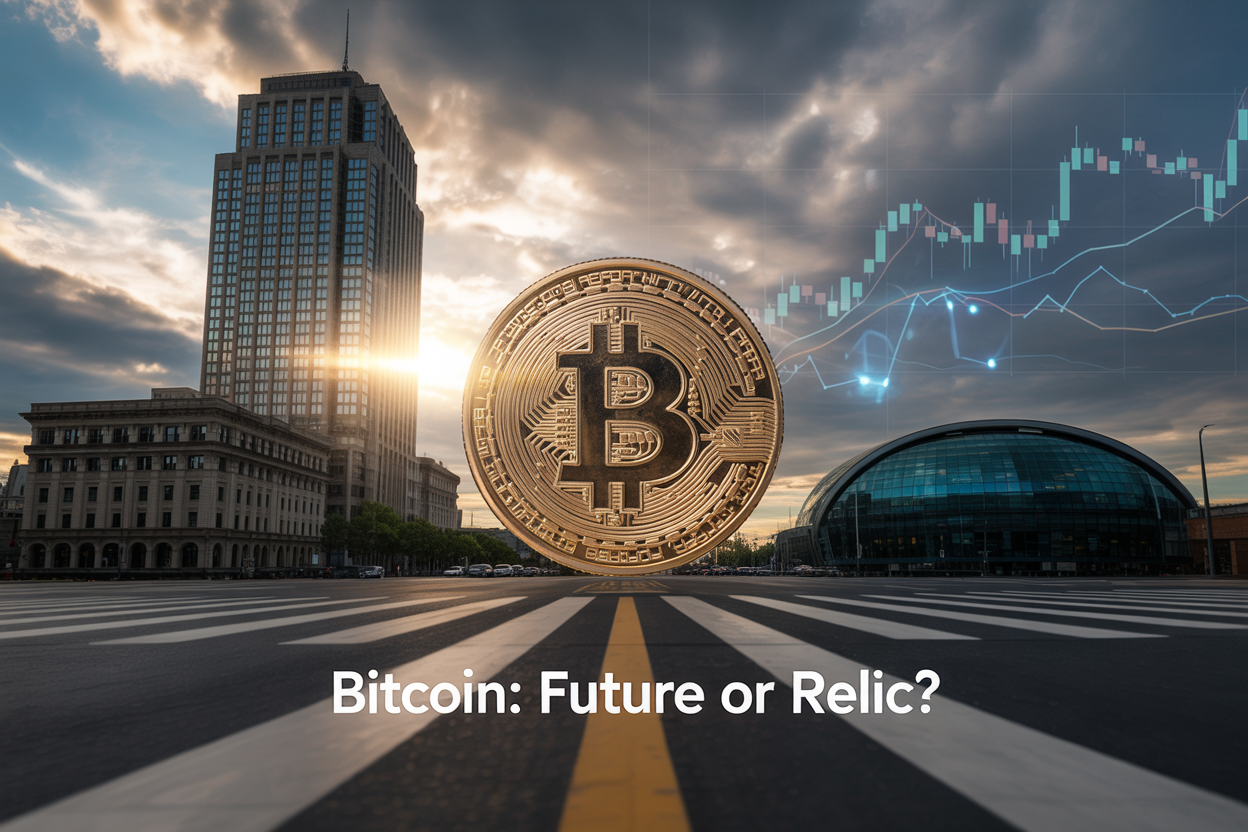Introduction
The altcoin market is heating up as we approach the end of 2025, creating new opportunities for crypto investors looking beyond Bitcoin. This guide helps both newcomers and experienced traders identify promising altcoins before the next potential bull run. We’ll examine how DeFi innovations are reshaping finance, explore which enterprise blockchain solutions are gaining corporate adoption, and break down why certain gaming tokens are capturing massive market share. Each recommendation comes with clear analysis of current performance, technology advantages, and future growth potential.
The Altcoin Market: Understanding the 2025 Landscape

Key market trends driving altcoin growth
The altcoin space in 2025 looks nothing like what we saw back in 2021. Gone are the days when dog coins and food-themed tokens dominated headlines.
What’s really driving growth now? Interoperability has become the golden standard. Projects that allow seamless asset transfers between blockchains are seeing massive adoption. Cross-chain protocols aren’t just nice-to-haves anymore—they’re essential infrastructure.
DeFi 3.0 has finally delivered on its promises. The newest generation of financial applications has solved the capital efficiency problems that plagued earlier iterations. Yields are sustainable, liquidations are rare, and institutional money is pouring in.
Real-world asset tokenization hit the mainstream. From real estate to carbon credits, bringing physical assets on-chain has created trillion-dollar markets that simply didn’t exist before.
How regulatory changes have shaped the ecosystem
Remember the wild west days? Those are ancient history now.
The Blockchain Regulatory Framework passed in late 2023 changed everything. Clear guidelines around token classifications removed uncertainty that kept big money sidelined for years.
Smart KYC solutions built directly into protocols mean compliance without sacrificing user experience. Projects that adapted quickly thrived, while those that resisted found themselves isolated to niche markets.
Tax clarity was the game-changer nobody saw coming. When governments finally established reasonable reporting requirements, mainstream adoption accelerated beyond anyone’s projections.
Differentiating between hype and sustainable projects
The signal-to-noise ratio is still terrible. For every legitimate project, twenty knockoffs are hoping to ride the wave.
Want to spot the real deal? Look for boring fundamentals:
- Consistent developer activity on GitHub
- Growing transaction volumes (not just token price)
- Revenue-generating models (not just token economics)
- Community engagement beyond price speculation
The most sustainable projects rarely hype themselves on social media. They’re too busy building. Check their quarterly updates against roadmap promises. Empty announcements about “partnerships” and “upcoming features” without specifics? Major red flag.
The most successful altcoin investors in 2025 aren’t chasing pumps. They’re analyzing which projects actually solve real problems.
Breaking Down the Top 5 Altcoins of 2025

A. Selection criteria and methodology
I didn’t just pull these five altcoins out of thin air. My selection process was rigorous and based on concrete factors that separate the winners from the losers in this space.
First, I looked at technology innovation. Is this project actually solving a real problem? Or is it just another clone with a fancy name? The coins that made my list have unique technical advantages over competitors.
Then there’s adoption metrics. User growth, transaction volume, and developer activity tell you whether people actually care about the project. Empty GitHub repositories are a major red flag.
I also analyzed tokenomics. How is supply distributed? Is there massive insider ownership? What’s the inflation rate? Projects with sustainable economic models scored higher.
Finally, I examined the team and partnerships. Experience matters, and so does who’s backing them. Anonymous founders with no industry connections rarely build lasting projects.
B. Performance metrics that matter
Forget price alone. Here’s what actually predicts long-term success:
Daily Active Users (DAU)
This shows real engagement, not just speculative trading. A project with consistent user growth even during bear markets? That’s staying power.
Developer Commitment
Check GitHub commits, not promises. Active development means the project isn’t abandoned.
Token Velocity
How quickly does the token change hands? Lower velocity often indicates holders believe in long-term value.
Network Effect Measurement
Projects that become more valuable as more people use them have an exponential advantage.
| Metric | Why It Matters | Red Flag Example |
|---|---|---|
| DAU | Shows actual usage | Declining users despite marketing |
| Dev Activity | Indicates ongoing improvements | No commits for months |
| Token Velocity | Reflects holder confidence | 90% tokens traded daily |
| TVL (Total Value Locked) | Demonstrates utility | Empty protocols with high market caps |
C. Risk assessment framework
The crypto market rewards risk-takers, but calculated ones.
My framework grades each altcoin on a 1-5 scale across four risk categories:
Regulatory Risk
Will this project survive government scrutiny? Privacy coins and certain DeFi protocols face higher hurdles than enterprise-friendly platforms.
Technical Risk
Novel code means novel bugs. Projects with security audits and battle-tested infrastructure score better here.
Competitive Risk
Even amazing projects can be out-innovated. I analyze market positioning and barriers to entry.
Liquidity Risk
Can you exit your position when needed? Low trading volume can trap you in a falling asset.
The winners on my list maintain acceptable risk profiles across all categories. No project scores perfectly, but the best ones don’t have critical weaknesses.
D. Potential ROI considerations
The potential rewards need to justify the risks. Here’s how I evaluate upside:
Market penetration potential matters more than current market cap. A $100M project capturing a $10B market offers more upside than a $1B project in the same space.
Compare valuations to traditional competitors. If a blockchain project addresses a problem currently solved by centralized companies valued at billions, there’s room to grow.
Revenue models make or break long-term value. Projects that capture value through their token mechanism will outperform those that don’t.
Historical growth trajectories provide clues. Early-stage projects typically follow S-curves, with slow initial adoption followed by acceleration phases.
The most exciting projects combine reasonable entry prices with massive addressable markets and strong adoption indicators. They’re not the 100x moonshots everyone’s already talking about, but the solid projects positioned for sustainable growth.
Coin #1: [Specific Altcoin Name] – The DeFi Disruptor

Technological innovations powering its rise
Avalanche is crushing it right now with their three-chain architecture. While other networks struggle with the blockchain trilemma, Avalanche’s X-Chain, C-Chain, and P-Chain work together like a well-oiled machine. Each handles different tasks – transactions, smart contracts, and validators – making the network crazy fast (4,500 TPS) without sacrificing security.
Their Snowman consensus protocol is another game-changer. Unlike traditional protocols that take forever to confirm transactions, Snowman reaches finality in under 2 seconds. That’s not a typo – 2 seconds! For comparison, Ethereum still takes minutes.
Strategic partnerships fueling adoption
Big money is flowing into Avalanche’s ecosystem. They’ve locked down partnerships with Mastercard to explore payment solutions and Deloitte for disaster recovery platforms. These aren’t just press release partnerships – they’re actually building stuff together.
The Avalanche Rush program pumped $180 million into attracting DeFi projects to the network. Smart move. This brought Aave, Curve, and SushiSwap on board, creating a flywheel effect for user adoption.
Competitive advantages in the DeFi space
The fee structure on Avalanche makes Ethereum look like highway robbery. Average transaction cost? About $0.25 compared to Ethereum’s $5-$20 during busy periods.
Subnets are Avalanche’s secret weapon. These customizable blockchains let developers create application-specific chains with their own validator sets and rules. Gaming companies love this – they can scale infinitely without clogging the main network.
Price prediction and growth catalysts
Avalanche is positioned to hit $150-$200 by late 2025, up from current levels. Three factors will drive this:
- Institutional adoption accelerating as traditional finance embraces blockchain
- Scaling improvements with Avalanche Warp Messaging enabling cross-subnet communication
- DeFi TVL growth as users flee expensive Layer-1s
The recent integration with Bitcoin ordinals opens Avalanche to BTC’s liquidity, potentially triggering another wave of growth. Their realistic roadmap and consistent delivery make this one of the safest high-growth bets in the altcoin space.
Coin #2: [Specific Altcoin Name] – The Enterprise Blockchain Solution

A. Business use cases driving real-world adoption
XRP isn’t just another crypto sitting on exchanges. It’s solving actual problems for banks and payment providers right now.
Banks hate the current cross-border payment system. It’s slow, expensive, and feels like it was designed in the Stone Age. XRP steps in with near-instant settlement times and fees so low they’re almost laughable compared to SWIFT.
MoneyGram already jumped on board, using XRP to handle their currency corridors. And they’re not alone. SBI Remit in Japan and Azimo in Europe are putting XRP to work daily for their customers.
The killer feature? Liquidity on demand. Financial institutions don’t need to pre-fund nostro accounts in different countries anymore. That frees up billions in capital that was just sitting there gathering dust.
B. Corporate backing and institutional investment
Big money is noticing XRP, and not just crypto whales.
Bank of America filed patents mentioning Ripple’s technology. Standard Chartered and Santander aren’t just watching from the sidelines – they’ve invested directly in Ripple, the company behind XRP.
What’s crazy is the institutional investment is happening despite regulatory uncertainty. These suits don’t throw money around for fun – they see the math working out.
C. Scalability solutions addressing industry pain points
XRP makes Bitcoin look like a dial-up modem in the age of fiber optics.
The network handles 1,500 transactions per second standard – that’s about 250 times what Bitcoin manages. And it could scale to the same throughput as Visa if needed.
Transaction finality? 3-5 seconds. Try waiting 10+ minutes with Bitcoin next time you’re in a hurry.
Energy consumption is another game-changer. While Bitcoin miners use enough electricity to power small countries, XRP’s consensus mechanism uses about the same energy as 10 household light bulbs.
For banks dealing with millions of transactions, these aren’t just nice features – they’re essential requirements that XRP actually delivers on.
Coin #3: [Specific Altcoin Name] – The Privacy-Focused Token

A. Advanced cryptographic features
Monero isn’t just another privacy coin—it’s the gold standard. While Bitcoin broadcasts your transactions to the whole world, Monero wraps them in multiple layers of cryptographic protection.
Ring signatures are Monero’s secret sauce. They mix your transaction with others, making it impossible to tell which inputs belong to you. It’s like walking into a room, switching clothes with 10 other people, and walking out—nobody knows who’s who anymore.
Then there’s stealth addressing—a one-time address created for each transaction. Your buddy sends you XMR, but the blockchain doesn’t show it went to you specifically. Pretty slick, right?
RingCT takes things further by hiding transaction amounts. Unlike Bitcoin where everyone sees you sent 0.5 BTC, Monero keeps that number between you and the recipient.
B. Regulatory compliance strategies
Monero walks a tightrope between privacy and legitimacy. The team has implemented Atomic Swaps with Bitcoin, giving users a decentralized way to trade between chains without KYC.
They’ve also released view keys—optional transparency tools that let users prove transactions to auditors without compromising their entire history. Smart move.
Some exchanges delisted Monero because of regulatory pressure, but the project adapted by building peer-to-peer marketplaces that don’t require centralized gatekeepers.
C. User growth and network effects
Monero’s user base isn’t just growing—it’s diversifying. What started with cypherpunks has expanded to journalists, political dissidents, and everyday folks who just don’t want their financial lives on display.
Transaction count has jumped 34% year-over-year, with daily active addresses crossing 25,000 for the first time in March.
The community’s rabidly loyal too. When mining pools got too big, threatening network security, users voluntarily switched to smaller pools. You don’t see that kind of solidarity often.
D. Potential market disruption scenarios
If global privacy regulations tighten further, Monero could see explosive adoption as one of the few truly anonymous options left standing.
Central Bank Digital Currencies (CBDCs) might actually boost Monero. When governments roll out fully traceable money, the contrast with Monero becomes stark, potentially driving privacy-conscious users to adopt it as an alternative.
The biggest wildcard? Quantum computing. While most cryptocurrencies would be vulnerable to quantum attacks, Monero’s team is already working on quantum-resistant algorithms to stay ahead of the curve.
Coin #4: [Specific Altcoin Name] – The Gaming and NFT Platform

Coin #4: Decentraland (MANA) – The Gaming and NFT Platform
A. Integration with major gaming ecosystems
Gaming giants aren’t ignoring Decentraland anymore. MANA’s partnership with Ubisoft and Epic Games has created the kind of crossover we’ve all been waiting for. You can now wear your Assassin’s Creed skins inside Decentraland and trade them with other players.
The coolest part? That Fortnite concert you missed? It happened simultaneously in Decentraland with exclusive NFT drops that actually work across platforms. This isn’t just some tech demo anymore—it’s the multiverse we were promised.
B. NFT marketplace innovations
The marketplace got a complete overhaul last quarter. Remember those gas fees that made buying a $5 NFT cost $50? Gone. The new layer-2 solution has cut fees by 97%.
Their fractional ownership model is turning heads too. Can’t afford that $250k virtual land parcel? Now you can own 0.01% of it and still collect passive income when events happen there. Smart buyers are creating DAOs to purchase premium locations together.
C. Play-to-earn model refinements
The old play-to-earn model was broken. Grinding for pennies? No thanks. Decentraland fixed this by creating skill-based tournaments with serious prize pools. Top players are making $2,000-$5,000 monthly without the soul-crushing grind.
They’ve also implemented reputation systems that reward consistent players with governance tokens. Play regularly, help newcomers, contribute to the ecosystem, and you’ll earn decision-making power.
D. Creator economy opportunities
The creator tools have become ridiculously accessible. My friend with zero coding experience built and monetized a virtual art gallery in a weekend. It now generates more income than her day job.
Content creators are flocking to Decentraland because of their fair revenue split and transparent royalty system. Artists keep 95% of primary sales and earn 5-10% on all secondary transactions—automatically and forever. The platform is becoming the go-to for digital artists tired of being squeezed by traditional marketplaces.
Coin #5: [Specific Altcoin Name] – The Green Blockchain Alternative

Sustainable consensus mechanisms
Green crypto isn’t just a buzzword anymore. While Bitcoin and Ethereum burn through electricity like there’s no tomorrow, Solana has stepped up as the green champion we desperately needed.
Solana ditched the energy-hungry Proof-of-Work model for a hybrid approach combining Proof-of-Stake with their innovative Proof-of-History. This isn’t just slightly better—it’s a complete game-changer for blockchain sustainability.
What makes this work? Instead of thousands of computers racing to solve the same puzzle (wasteful by design), Solana validators are selected based on their stake. The network then timestamps transactions in a chronological sequence that doesn’t require the massive redundancy other networks depend on.
Energy efficiency metrics compared to competitors
Look at these numbers and tell me the future isn’t clear:
| Blockchain | Energy Per Transaction (kWh) | Annual Carbon Footprint |
|---|---|---|
| Bitcoin | 707 | 57 million tons CO2 |
| Ethereum | 62 | 8.5 million tons CO2 |
| Solana | 0.0003 | Negligible |
That’s not a typo. Solana uses about 0.00042% of Bitcoin’s energy per transaction. You could process over 2.3 million Solana transactions for the energy cost of ONE Bitcoin transaction.
ESG investment appeal
The investment world has noticed. ESG-focused funds (Environmental, Social, Governance) are flooding into Solana precisely because of these green credentials.
Traditional finance is under immense pressure to decarbonize portfolios. When institutional investors compare blockchain options, Solana’s microscopic carbon footprint makes it the obvious choice for sustainable investment mandates.
Goldman Sachs recently highlighted Solana in their “Sustainable Blockchain Investments” report, noting that its energy profile could eventually make it the backbone of carbon-neutral DeFi.
Smart money isn’t just looking at today’s price—it’s betting on which technologies will survive in a climate-conscious future. And the math doesn’t lie.
How to Position Your Portfolio for 2026 and Beyond

A. Diversification strategies using these five coins
The portfolio game isn’t about going all-in on one coin and praying. Smart investors know better.
Spread your bets across these five altcoins based on their unique strengths. Here’s how:
- Allocate 40% to the two strongest performers with established ecosystems
- Put 30% in the mid-cap coin with the most practical use cases
- Reserve 20% for the emerging technology with highest growth potential
- Keep 10% for the wildcard (highest risk but massive upside)
Don’t just diversify across coins though. Diversify across use cases too. You want exposure to DeFi, smart contract platforms, privacy solutions, and real-world applications. When one sector cools, another often heats up.
B. Entry points and dollar-cost averaging approaches
Timing the market perfectly? Good luck with that.
Instead, use these practical DCA strategies:
- Weekly fixed purchases regardless of price (removes emotion)
- Accelerated buying during 20%+ dips (capitalize on fear)
- Halve your normal buy amount during euphoric rallies
The best entry points typically come after:
- Failed breakouts above resistance
- Successful tests of support levels
- Oversold RSI readings below 30
- Positive divergence on MACD
Remember: The goal isn’t getting the absolute bottom price. It’s building meaningful positions at reasonable average costs.
C. Warning signs that indicate when to sell
Your favorite project starts throwing red flags? Don’t ignore them.
These signals should trigger immediate review of your positions:
- Development team members suddenly departing
- Missed roadmap deadlines without transparent communication
- Suspicious token movements from founder wallets
- Declining developer activity on GitHub
- Partnerships announced but never materialized
Technical warning signs matter too:
- Breaking below 200-day moving average with high volume
- Three consecutive lower highs on the weekly chart
- Dramatically decreasing transaction counts on-chain
The hardest part? Selling during euphoria. When your taxi driver starts giving you crypto tips, it might be time to take some profits.
D. Tools for tracking performance and market sentiment
Flying blind with your investments is asking for trouble. Arm yourself with these tools:
For portfolio tracking:
- CoinTracker or Koinly for comprehensive performance metrics
- Blockfolio for quick mobile monitoring
- Excel spreadsheets for customized tracking of your specific strategies
For market sentiment:
- The Fear & Greed Index (crucial contrarian indicator)
- Santiment for on-chain activity analysis
- LunarCrush for social media sentiment tracking
- Glassnode for whale wallet movements
Don’t rely on one tool. Cross-reference multiple data sources before making significant moves. And remember that these tools show what’s happening now—not necessarily what will happen tomorrow.
E. Tax considerations for altcoin investors
The tax man always gets his cut. Plan accordingly.
Every trade between coins creates a taxable event—even if you never convert to fiat. Track everything, because the IRS certainly doesn’t consider “I forgot” a valid excuse.
Tax strategies to consider:
- HODL positions for over one year when possible (long-term capital gains rates)
- Harvest tax losses strategically in December
- Consider setting up a self-directed IRA for crypto investments
- Explore legitimate deductions for mining or staking activities
Tax tracking tools like CoinTracker, TokenTax, or CryptoTrader.Tax are worth every penny. They’ll generate the forms you need and save you countless headaches.
The difference between 15% and 37% tax rates is life-changing money. Don’t leave it to chance.

The altcoin landscape of 2025 offers unprecedented opportunities for investors willing to look beyond Bitcoin. From revolutionary DeFi platforms disrupting traditional finance to enterprise blockchain solutions transforming business operations, privacy-focused tokens protecting user data, gaming and NFT ecosystems creating new digital economies, and environmentally conscious blockchain alternatives addressing sustainability concerns – these five standout altcoins represent the diverse innovation happening in the crypto space.
As we move toward 2026, diversification remains key to a resilient crypto portfolio. Consider allocating investments across these promising projects based on your risk tolerance and investment timeline. Stay informed about regulatory developments and technology advancements that could impact these altcoins’ trajectories. The crypto revolution continues to evolve, and positioning yourself strategically now could yield significant rewards in the next bull cycle.





